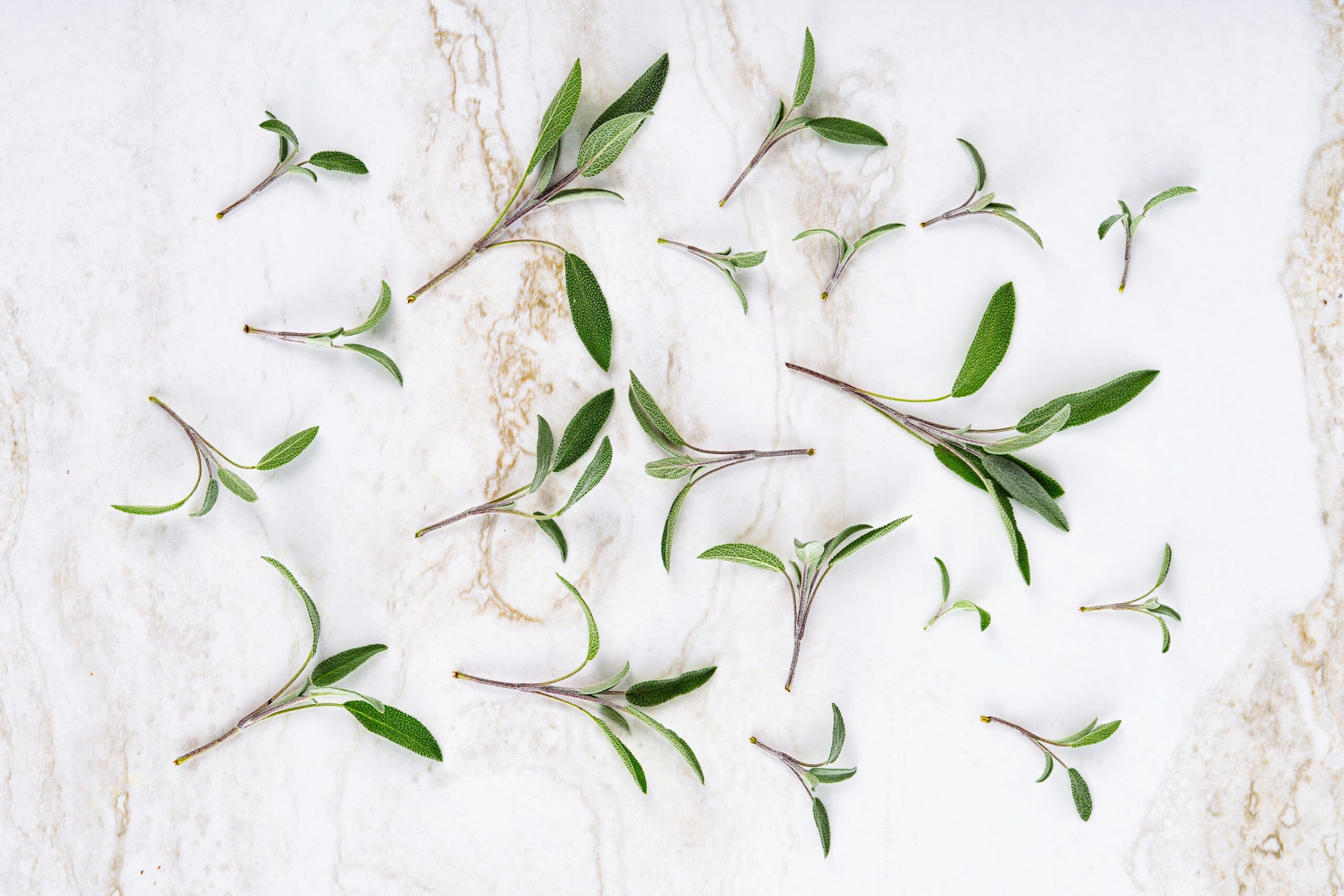Sage herb, often overlooked in the culinary world, is a powerful herb that packs a punch both in flavor and health benefits. Did you know that this aromatic plant has been used for centuries in traditional medicine? Its unique properties make it a must-have in your kitchen and natural remedy cabinet. From enhancing your favorite dishes to providing natural wellness benefits, sage is not just a seasoning; it’s a treasure trove of potential. Curious about how sage can transform your health and cooking? Whether you’re interested in the culinary uses of sage or its efficacy in promoting digestive health, this herb holds secrets that many are yet to discover. Imagine infusing your meals with this fragrant green while reaping its many advantages—sounds intriguing, doesn’t it? As we delve deeper into the world of sage, you’ll learn about its nutritional value, medicinal properties, and even tips on how to grow your own sage at home. Get ready to unlock the mysteries of sage herb and elevate both your dishes and your well-being with this remarkable plant!
Discover the Top 7 Health Benefits of Sage Herb You Didn’t Know About
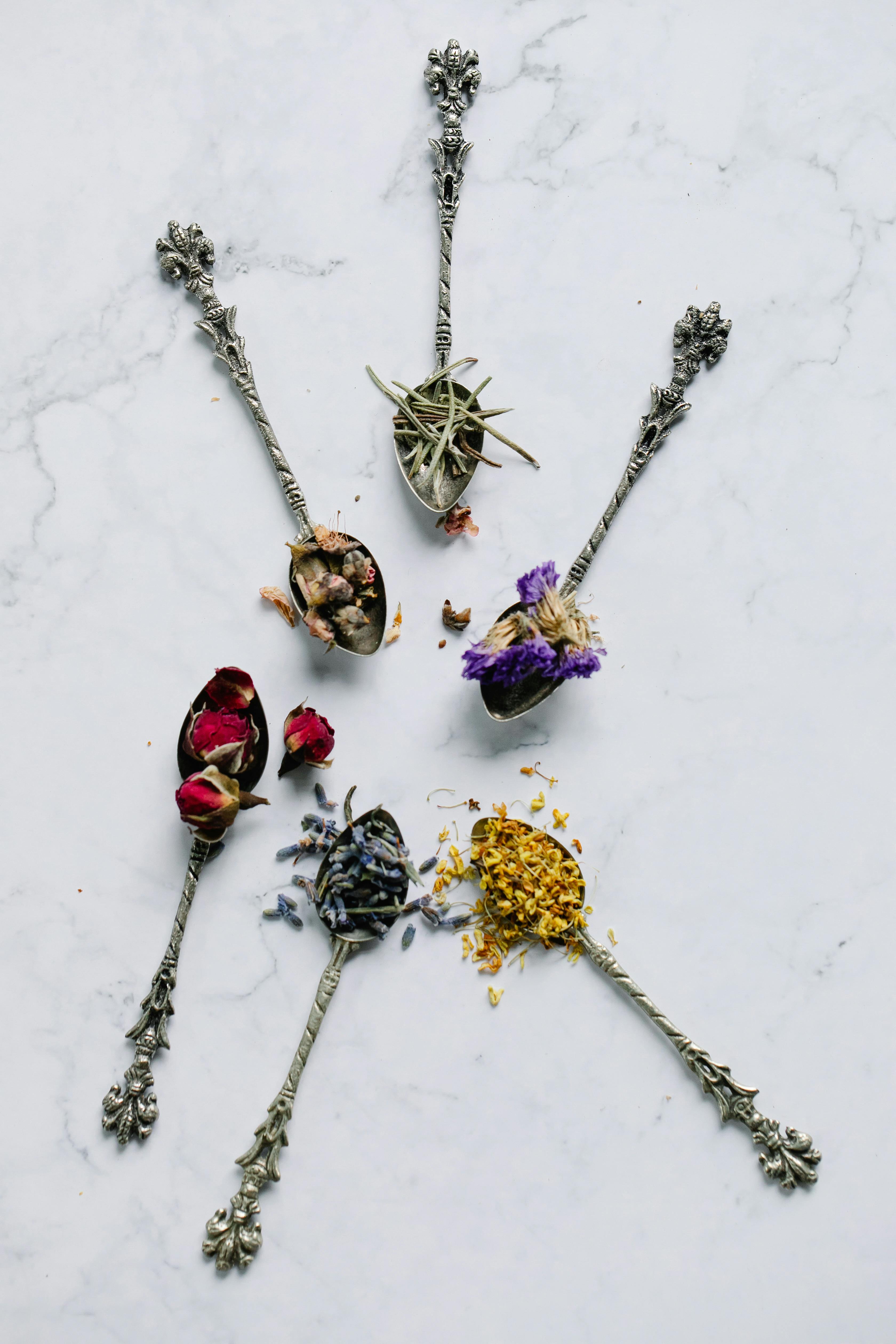
Sage herb, oh boy, where to even begin? It’s like that one friend who shows up uninvited to a party and suddenly everyone is talking about it. Not really sure why this matters, but hey, it’s got a ton of history and uses that might just blow your mind.
First off, sage herb benefits are something almost everyone should know about. This little green powerhouse has been used for centuries, and I mean, who doesn’t love a good ancient remedy? Its scientific name is Salvia officinalis, but let’s be real, who’s going around saying that? Just call it sage, okay?
A little trivia for ya: sage has been around since, like, ancient Roman times. They used it for all sorts of things, from cooking to medicine. The Romans believed it could even bring wisdom. So, does that mean if I eat enough sage, I’ll become a genius? Maybe it’s just me, but I feel like I need to get a Ph.D. in sage-eating if that’s the case!
Let’s dive into some of the sage herb uses. You can’t just throw it on your pasta and call it a day, folks. Nah, this herb is versatile and can be used in teas, soups, and even as a seasoning for meats. I mean, have you ever tried sage butter on some warm bread? It’s like a hug in your mouth. But, on the flip side, just don’t overdo it ‘cause sage can be a bit overpowering. Nobody wants to be that person who ruins dinner with too much sage.
Now, the flavor profile of sage is kinda unique. It’s earthy, slightly peppery, and has a hint of bitterness. Some people absolutely adore it while others are like, “uh, no thanks.” If you ask me, the taste can be an acquired one—like olives or blue cheese. If you’ve never tried it, you might be wondering what the heck I’m rambling about. Just give it a shot, you might love it, or maybe hate it, who knows.
Let’s talk about the health benefits of sage herb. It’s said to have anti-inflammatory properties, which is a fancy way of saying it could help with, like, swelling and pain. Some studies have even suggested that sage can help with cognitive function. So if you’re feeling a little foggy-headed, maybe a cup of sage tea could clear things up? Again, not a doctor, just a person who likes to munch on herbs.
And speaking of cognitive function, did you know that sage might help with memory? It’s true—even in ancient times, people thought it could boost memory. So, if you’re preparing for a test or just trying to remember where you left your keys, maybe sprinkle some sage on your breakfast. Sounds silly, but… maybe it works?
Now, if you’re thinking about growing your own sage herb plant, it’s actually pretty easy! Just grab a pot, some soil, and seeds or a cutting, and boom, you’re on your way to becoming a sage parent. Keep it in a sunny spot, water it just enough (don’t drown the poor thing), and you’ll have fresh sage at your fingertips. It’s like having your own little herb garden without needing a green thumb.
Here’s a quick table to help you on your sage journey:
| Sage Herb Benefits | Description |
|---|---|
| Anti-inflammatory | Helps reduce swelling and pain |
| Cognitive booster | Might improve memory and mental function |
| Antioxidant properties | Fights free radicals and supports health |
| Digestive aid | Can help with digestion and gut health |
Alright, let’s not forget the potential downsides. Some people can be allergic to sage, which is a bummer. If you’ve never tried it before, maybe do a little patch test by putting a tiny bit in your mouth and seeing what happens. Just don’t go overboard, or you might end up regretting it.
And hey, there’s also this thing called sage essential oil. You can find it in health shops, and it’s used for all sorts of things—aromatherapy, skin care, and even as an insect repellent. But be careful, ‘cause essential oils are potent! One drop too many, and you might be sending everyone running for the hills.
In conclusion, sage herb is not just an ordinary plant. It’s packed with benefits and can add a little pizazz to your cooking. From ancient remedies to modern-day uses, sage has made its mark. So next time you’re in the kitchen or feeling a bit under the weather, remember that this little green miracle might just be the answer you’re looking for. Who knew a humble herb could have such a
How to Use Sage Herb in Your Cooking: 5 Delicious Recipes to Try Today

Sage is one of those herbs that kinda seems to get lost in the shuffle, you know? People talk about rosemary, thyme, and basil like they’re the rock stars of the herb world, but sage herb is like that quiet kid in the corner that surprises you with some hidden talents. It’s pretty popular in Mediterranean cooking, but not really sure why this matters, but it does have a rich history and some interesting benefits.
Let’s dive right into what sage is. It’s a perennial plant, which means it comes back year after year, and it’s got these lovely, gray-green leaves that sorta look soft and fuzzy. You can find it in gardens, or just purchase it from a store. I mean, who doesn’t like the idea of having fresh herbs right at their fingertips? Sage herb has a distinct earthy flavor, making it a great addition to a variety of dishes. It’s often used in stuffings, especially around the holidays, but let’s be real—who wants to wait for Thanksgiving to enjoy this herb?
Now, let’s talk about the health benefits of sage herb. There’s a lot of chatter about it being good for digestion, which is great if you’ve overindulged on pasta or maybe that questionable taco stand. Some studies suggest that sage can help with cognitive function too. Like, maybe it can help you remember where you put your keys? Or is that just wishful thinking? Either way, it’s nice to think that something so tasty can also be good for your brain.
Here’s a quick rundown of what sage can do for ya:
| Benefit | Description |
|---|---|
| Digestive Aid | Helps with bloating and indigestion. |
| Cognitive Enhancer | May improve memory and concentration. |
| Antioxidant Properties | Contains compounds that fight free radicals. |
| Anti-inflammatory | Could reduce inflammation in the body. |
Maybe it’s just me, but I feel like sage has a bit of a reputation problem. People don’t think of it as a go-to herb for everyday cooking. But, let’s not forget, it’s not just for turkey stuffing, folks. You can toss it into pasta dishes, sprinkle it on roasted veggies, or even use it to jazz up some meats. Sage herb is versatile, and it’s about time we give it the spotlight it deserves.
Now, if you’re feeling adventurous, why not try making sage tea? It’s super simple, and you only need a few leaves and some boiling water. Just steep those leaves for a bit, and voila! You got yourself a nice, herbal drink that’s supposed to be soothing. Not really sure if it works wonders, but it certainly beats drinking plain ol’ water, right?
Oh, and let’s not forget about the different types of sage. You’ve got your common garden sage, but there’s also purple sage and even pineapple sage. Pineapple sage?? I mean, what’s that all about? Who knew sage could get fruity? Each type has its own flavor profile, and experimenting with them could be a fun kitchen adventure.
Here a quick table of the different types of sage:
| Type of Sage | Flavor Profile | Uses |
|---|---|---|
| Common Sage | Earthy and savory | Stuffings, meats, sauces |
| Purple Sage | Slightly milder and sweeter | Salads, garnishes |
| Pineapple Sage | Fruity and aromatic | Desserts, teas, fruit dishes |
But hey, don’t go overboard with sage. It’s one of those herbs that can easily overpower a dish if you’re not careful. A little goes a long way! You don’t want your guests thinking they’re eating a plate of sage with a side of chicken, right?
And here’s a fun tidbit: in ancient times, sage was considered sacred. People believed it could ward off evil spirits and even cure diseases. Imagine that! You could’ve been a sage-wielding warrior back in the day. So next time you sprinkle some on your food, just think, you might be channeling some serious historical vibes.
Also, if you’re thinking about growing sage herb yourself, it’s super easy! It prefers well-drained soil and lots of sunlight. Just pop it in a pot or in your garden, and you’re golden. I think it’s really cool to have fresh herbs at your disposal without having to run to the store every time you wanna whip up something fancy.
But, like with everything else, there’s a downside. Some folks might find sage too strong for their taste, or maybe it doesn’t sit well with their stomachs. So, if you’re trying it for the first time, maybe start small? You don’t wanna ruin a perfectly good dish with an over
The Science Behind Sage: Why This Herb is a Superfood for Your Immune System

Sage herb, oh boy, where do we even begin? This little green powerhouse, with its fluffy leaves and strong aroma, is like the cool kid in the herb world. Ever thought about why sage herb is so popular? Maybe it’s just me, but I feel like it might have something to do with its unique flavor and all the health benefits that come along with it.
First things first, let’s talk about what sage herb even is. It’s a member of the mint family, which is kinda wild if you think about it. I mean, mint and sage are like distant cousins or something. The scientific name for sage is Salvia officinalis, but you can just call it sage. It’s used in cooking, medicine, and even in rituals. Yep, you heard that right. People burn it to cleanse spaces. Not really sure why this matters, but it’s a thing.
Now, the culinary uses of sage herb are endless. You can toss it in pasta, sprinkle it on roasted vegetables, or even use it to flavor your meats. Just a heads-up, though, sage is pretty potent. So, if you think you can just throw in a ton of it without a care in the world, you might wanna think again. A little goes a long way. Like, really. You don’t want your dish tasting like you dumped a whole bottle of perfume in it.
Here’s a fun little table of common ways to use sage herb in your kitchen:
| Dish Type | Sage Usage |
|---|---|
| Meat Dishes | Rub on chicken or pork |
| Soups and Stews | Add to flavor base |
| Vegetable Dishes | Toss with roasted veggies |
| Stuffing | Essential for Thanksgiving |
| Sauces | Blend in for depth of flavor |
The health benefits of sage herb are also something to talk about. This herb is packed with antioxidants. I mean, who doesn’t want a boost in the antioxidant department? They fight free radicals or whatever. Plus, sage is said to help with digestion, which is pretty cool if you’re planning on having a heavy meal. It’s also been linked to improving memory and potentially helping with Alzheimer’s. That’s some serious stuff, and not just your average herb chatter.
But wait, there’s more! Sage can also be used in teas. Sounds a bit fancy, huh? Just steep some leaves in hot water, maybe add a little honey, and voila! You got yourself a soothing drink. If you’re like me, you might be skeptical about how good it really is. I mean, herbal teas can be hit or miss. It’s either a delightful sip or you’re wondering why you’re drinking leaf water.
Let’s not forget about the medicinal uses of sage herb. Folks have been using sage for centuries for its supposed healing properties. From sore throats to digestive issues, sage is like that friend who always shows up to help, even when you didn’t ask for it. People make tinctures and extracts, and some even use it for skincare. Who knew a little green leaf could do so much?
Now, as with anything, there’s a flip side. Some people might be allergic to sage. Yep, that’s right. Just because it’s a herb doesn’t mean it’s all sunshine and rainbows. If you’re trying to use sage, maybe do a little patch test first or something. You don’t wanna end up with a rash or feeling worse, right?
Here’s a quick listing of sage herb facts that might interest you:
- Type: Evergreen perennial
- Flavor: Earthy, slightly peppery
- Uses: Culinary, medicinal, ritualistic
- Best Pairings: Chicken, pork, beans, squash
And if you’re growing sage at home, you’re in for a treat. This herb thrives in well-drained soil and loves the sun. It’s like the sunbather of the herb world. Just don’t overwater it. It’s not a fan of soggy roots. Trust me, I learned that the hard way.
In the end, whether you’re using sage for your dinner, your health, or just to feel a bit fancy about your cooking, it’s a pretty neat herb to have around. So next time you’re at the store, maybe grab a little sage herb. You never know when you might need to spruce up your life or your cooking. Or just to feel like a culinary wizard in your kitchen. Who doesn’t want that?
Sage Essential Oil: Unlocking Its Aromatherapy Benefits for Stress Relief

Sage herb, isn’t it just one of those things that you kinda hear about but don’t really pay attention to? I mean, maybe it’s just me, but I feel like sage often gets overshadowed by more popular herbs like basil or parsley. But lemme tell you, sage is got some serious credentials, and it’s not just for grandma’s Thanksgiving stuffing.
First off, let’s talk about what sage herb is. It’s a perennial herb, which means it sticks around for a while and doesn’t just, like, vanish after a season. It’s got this distinctive gray-green leaves that can make your garden look kinda fancy, if you ask me. And not to mention, the smell? Wow, it’s like a warm hug from nature or something. Sage is often used in cooking, but it’s also got some healing properties that are worth mentioning, even if I’m not a doctor or anything.
Now, here’s where it gets a bit interesting: sage herb benefits are not just for your taste buds. People have been using sage for centuries, believing it can help with everything from digestion to memory. I’m not really sure why this matters, but hey, if it can help you remember where you put your keys, then sign me up! Some studies say it can even help with anxiety. Like, who doesn’t need a little sage in their life when the world feels like it’s going bonkers?
When it comes to cooking, sage is pretty versatile, but it’s not your everyday herb. You ain’t gonna sprinkle it on your cereal or anything. It’s mostly used in savory dishes. Think meats, especially poultry. You know, like that roasted chicken that makes you feel all cozy inside. And let’s not forget about stuffing, right? I mean, Thanksgiving wouldn’t be the same without it. You could say sage is the unsung hero of the holiday season, even if it doesn’t get the spotlight.
Speaking of cooking, here’s a quick breakdown of how to use sage in your kitchen:
- Fresh Sage: Toss it in at the end of cooking for a burst of flavor.
- Dried Sage: Use it in marinades or rubs, but don’t go overboard. A little goes a long way, trust me.
- Sage Tea: Yup, you can brew it. Just steep those leaves in hot water, and voila! A calming drink that might just take the edge off your day.
Now, if you’re thinkin’ about growing your own sage herb, it’s pretty easy. Sage likes full sun and well-drained soil. You could say it’s a bit of a diva when it comes to moisture. Too much water, and it’ll kinda throw a fit and start to rot. And nobody wants a sad sage plant, right? If you’re in a colder climate, just bring it inside during the winter. It’s not like it’s asking for much!
Let’s not forget about the sage herb uses beyond cooking. You might’ve heard about sage smudging, which is this ancient practice where you burn sage leaves to cleanse a space. People believe it helps to get rid of negative energy. Not sure if it works, but it sure makes your house smell nice, so there’s that. Plus, it’s like a mini ritual that can make you feel all zen, even if you’re just trying to escape from the chaos of daily life.
And for those who are into natural remedies, sage is packed with antioxidants. That’s right! It’s like a tiny little superhero in the herb world. Some folks say it can help reduce inflammation, which is something we could all use a bit of, right? Take that, sore muscles! But again, I’m not a health expert, so you might wanna do your own research before jumping on the sage bandwagon.
Here’s a quick table that sums up some sage herb benefits:
| Benefit | Description |
|---|---|
| Digestive Aid | Helps with bloating and upset stomachs. |
| Antioxidant Properties | Fights off those pesky free radicals. |
| Memory Booster | Some studies link it to improved cognition. |
| Anti-inflammatory | May reduce swelling and pain. |
I mean, with all these potential benefits, can you really blame someone for wanting to add a little sage to their life? I guess what I’m saying is that sage herb is more than just a pretty face in the herb garden. It’s got history, flavor, and maybe even a dash of magic. So why not give it a shot next time you’re cooking? Just remember, moderation is key, or you might end up with a dish that tastes like a sage factory exploded. And nobody wants that!
9 Surprising Ways Sage Can Enhance Your Digestive Health Naturally

Sage herb, you know, that green leafy thing that seems to pop up everywhere? Yeah, it’s not just for grandma’s Thanksgiving stuffing. I mean, maybe it is, but it’s also packed with history and health benefits that are kinda fascinating if you think about it. Sage has been used since way back when, like ancient Romans and Greeks were all over it. Not really sure why this matters, but it’s just one of those herbs that’s been around forever, making it a big deal in the world of cooking and herbal remedies.
So, let’s dive into the deep end here and explore the many uses of sage herb. First off, it’s a culinary superstar. You can throw it in soups, stews, and even roasted meats. And, let’s be honest, who doesn’t love a good roast? It’s like the comfort food of the universe. The flavor of sage is earthy, a bit peppery, and maybe, just maybe, it can add a little magic to your meal. Some folks even say it’s got this aroma that could knock your socks off, or at least make your kitchen smell like a five-star restaurant.
Now, onto the health benefits of this fabulous sage herb. There’s a lot of chatter about how it can aid digestion and maybe even improve memory. I mean, that’s what they say, right? There’s some research out there suggesting that sage could help with cognitive function, which is great if you’re like me and forget where you put your keys—like, every single day. It’s like a mystery I can’t solve. Anyway, sage is also loaded with antioxidants, which are like the superheroes of the food world. They fight off free radicals or something like that—sounds good to me!
Here’s a handy little table of sage’s potential health benefits:
| Health Benefit | Description |
|---|---|
| Antioxidant Properties | Helps combat free radicals, good for overall health |
| Anti-inflammatory | May reduce inflammation, which is always a plus |
| Digestive Aid | Can soothe upset stomachs and promote digestion |
| Cognitive Boost | Some studies show it might help with memory |
But wait, there’s more! Sage is also known for its aromatic qualities. Like, you can use it in essential oils or to make your own herbal sachets. Ever thought about that? Maybe it’s just me, but I feel like having a sage sachet in my closet could ward off bad vibes or something. Plus, it could make your clothes smell fresh. Who needs laundry detergent when you got sage? Okay, maybe that’s a stretch, but you get the point.
Now, let’s chat about how to grow this aromatic wonder. It’s not rocket science, folks. Sage is pretty darn forgiving. You can either grow it in pots or in your garden—whatever floats your boat. Just make sure you give it some sunshine and well-drained soil. I mean, it’s not picky, but if you drown it, well, let’s just say it won’t be happy.
Here’s a quick rundown of what you’ll need to grow sage herb:
- Seeds or Seedlings: You can start from seeds, but honestly, seedlings are easier. I’m all for the path of least resistance.
- Soil: Well-drained, sandy soil is best. If it’s too heavy, sage might just sulk and die on you.
- Light: Plenty of sunshine, like at least 6 hours a day. It’s a sun-worshipper, really.
- Water: Not too much! Let the soil dry out between waterings. It’s not a water-loving plant, trust me.
Speaking of growing, have you ever thought about how sage can be used in natural remedies? I mean, people have been making sage tea for centuries. It’s like a warm hug in a cup, or so they say. Just steep some dried leaves in hot water, and voila—you got yourself a cozy drink. Some folks even swear by it for sore throats or to help with cold symptoms. But honestly, who knows? Maybe it’s just the warmth that makes you feel better.
And don’t even get me started on sage smudging. This ancient practice of burning sage to cleanse spaces is pretty trendy right now. Some people claim it clears out negative energy—like, who wouldn’t want that? It’s like a spiritual spring cleaning. You light it up, wave it around, and hope for the best. I mean, what’s not to love about waving a stick of burning herbs around your house? Just make sure you don’t set off the smoke alarm, or you’ll really be cleansing more than just the vibes!
In conclusion—wait, just kidding, there’s
Can Sage Herb Improve Memory? Explore the Fascinating Research Findings
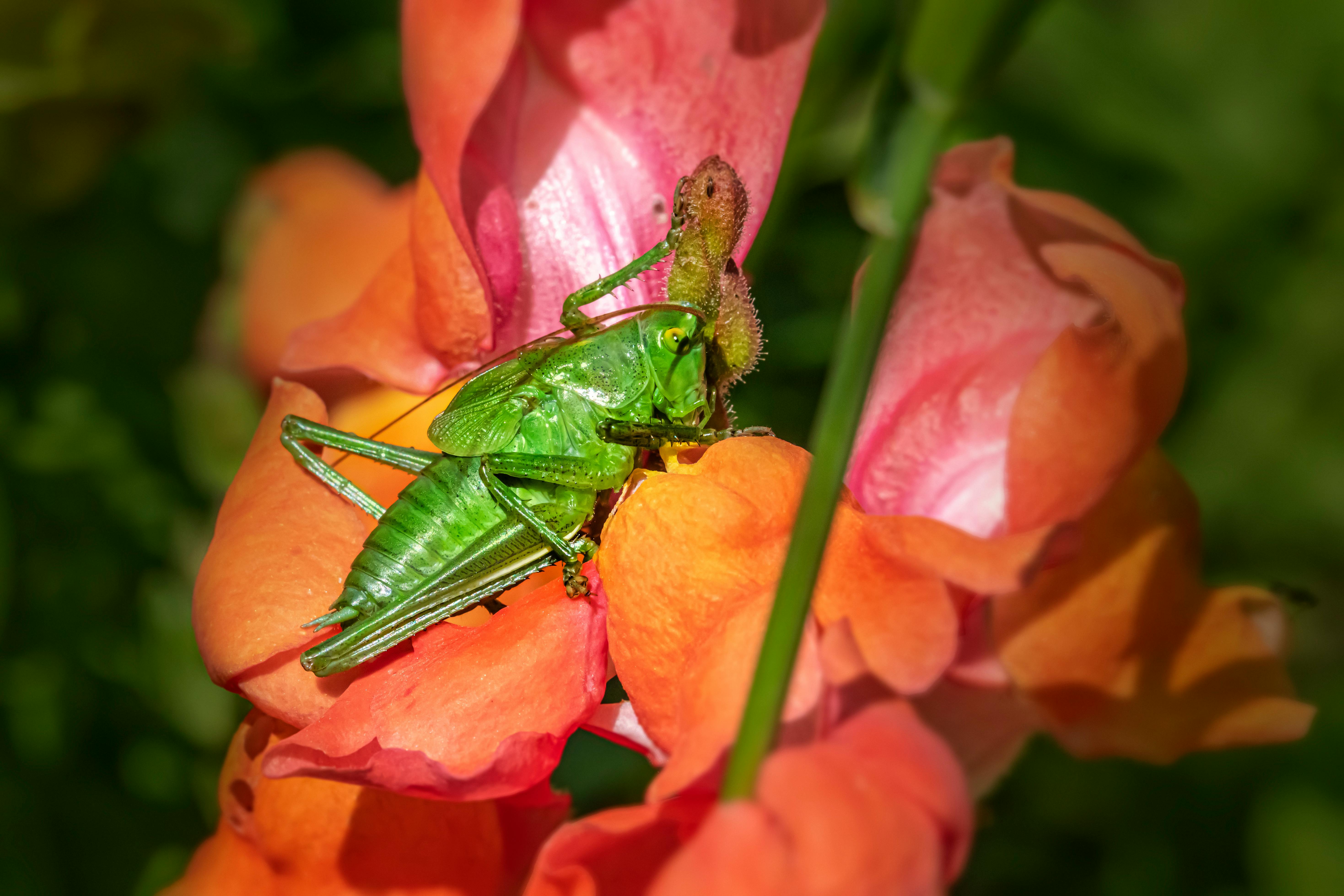
So, let’s dive into the world of sage herb, shall we? This little green gem is not just for grandma’s pot roast anymore. Seriously, if you think sage is only used in cooking, you’ve got another thing coming. I mean, it’s like saying a Swiss Army knife is just for opening cans. Not really sure why this matters, but sage has been around for centuries, and people are still figuring out all its uses. Kinda wild, right?
Sage, or as the cool kids call it, sage herb, is a member of the mint family. Yeah, you heard that right. It’s not just a pretty face. This herb packs a punch in the flavor department, and it’s also known for some pretty nifty health benefits. So, let’s break down what’s so great about this herb.
First off, let’s talk about the flavors. Sage has this earthy, slightly peppery taste that kinda reminds you of a warm hug. It’s perfect for seasoning meats, especially poultry. Ever had a turkey stuffed with sage herb? It’s like a flavor explosion in your mouth. But, maybe it’s just me, but I feel like sage is also kinda underestimated. Like, people throw it in the pot and forget about it.
Here’s a fun little tidbit: sage has also been used in traditional medicine, which is like, totally fascinating. Ancient Greeks and Romans believed it could heal everything from a sore throat to bad breath. And hey, if it was good enough for them, maybe we should pay attention. Sage is thought to have anti-inflammatory, antioxidant, and antimicrobial properties. Sounds fancy, right? It’s like the herb equivalent of a superhero.
Now, let’s get a little practical here. If you’re thinking about growing your own sage herb, you’re in for a treat. It’s super easy peasy to grow, and you don’t need a green thumb to do it. Just plant it in well-drained soil, give it plenty of sunshine, and water it occasionally. Boom! You’ve got your own herb garden. Here’s a little chart to help you out:
| Step | Instructions |
|---|---|
| Choose a Spot | Full sun, well-drained soil |
| Planting | Space about 2 feet apart |
| Watering | Once a week, more in hot weather |
| Harvesting | Pick leaves once the plant is big enough |
Now, let’s not forget about cooking with sage. You can use it fresh, dried, or even powdered. Personally, I think fresh sage has this vibrant flavor that just can’t be beat. But hey, dried sage is like the trusty sidekick that always has your back when fresh isn’t around. And if you’re feeling adventurous, try making sage-infused oil. Just heat some olive oil with a few sage leaves, and you’ve got yourself a culinary masterpiece. Or, at least something that looks impressive at dinner parties.
And if you’re into herbal teas, sage can be a great addition there too. Just steep a few leaves in hot water, and you’ve got a soothing drink that might help with digestion. Like, who knew an herb could be so versatile? Maybe it’s just me, but I feel like sage is the unsung hero of the herb world.
Now, for the skeptics out there, you might be wondering if there’s any science to back up these claims. And, well, there is! Studies have shown that sage herb can improve memory and cognitive function. So, if you’re forgetting where you put your keys, maybe sprinkle a little sage on your dinner. Not saying it’s a miracle cure, but hey, every little bit helps, right?
Let’s dive into some sage recipes because what’s the point of all this if you can’t eat it? Here’s a quick list of ideas to get your culinary juices flowing:
- Sage Butter – Melt butter and mix in chopped sage for a delicious topping on breads or veggies.
- Sage Chicken – Sauté chicken breasts with olive oil and fresh sage for a super simple dinner.
- Stuffing – Add sage herb to your stuffing mix for a classic flavor that everyone loves.
- Sage and Potato Soup – Blend sautéed potatoes with sage for a creamy, comforting soup.
So, there you have it. Sage isn’t just for your grandma’s kitchen anymore. It’s a flavor powerhouse, a health booster, and even a gardening project waiting to happen. Who knew? Whether you’re using it in a fancy dish or just throwing it in your next cup of tea, sage is the herb you didn’t know you needed in your life. So, next time you’re at the store, maybe grab a bunch of sage and see what all
The Ultimate Guide to Growing Sage: Tips for a Thriving Home Herb Garden
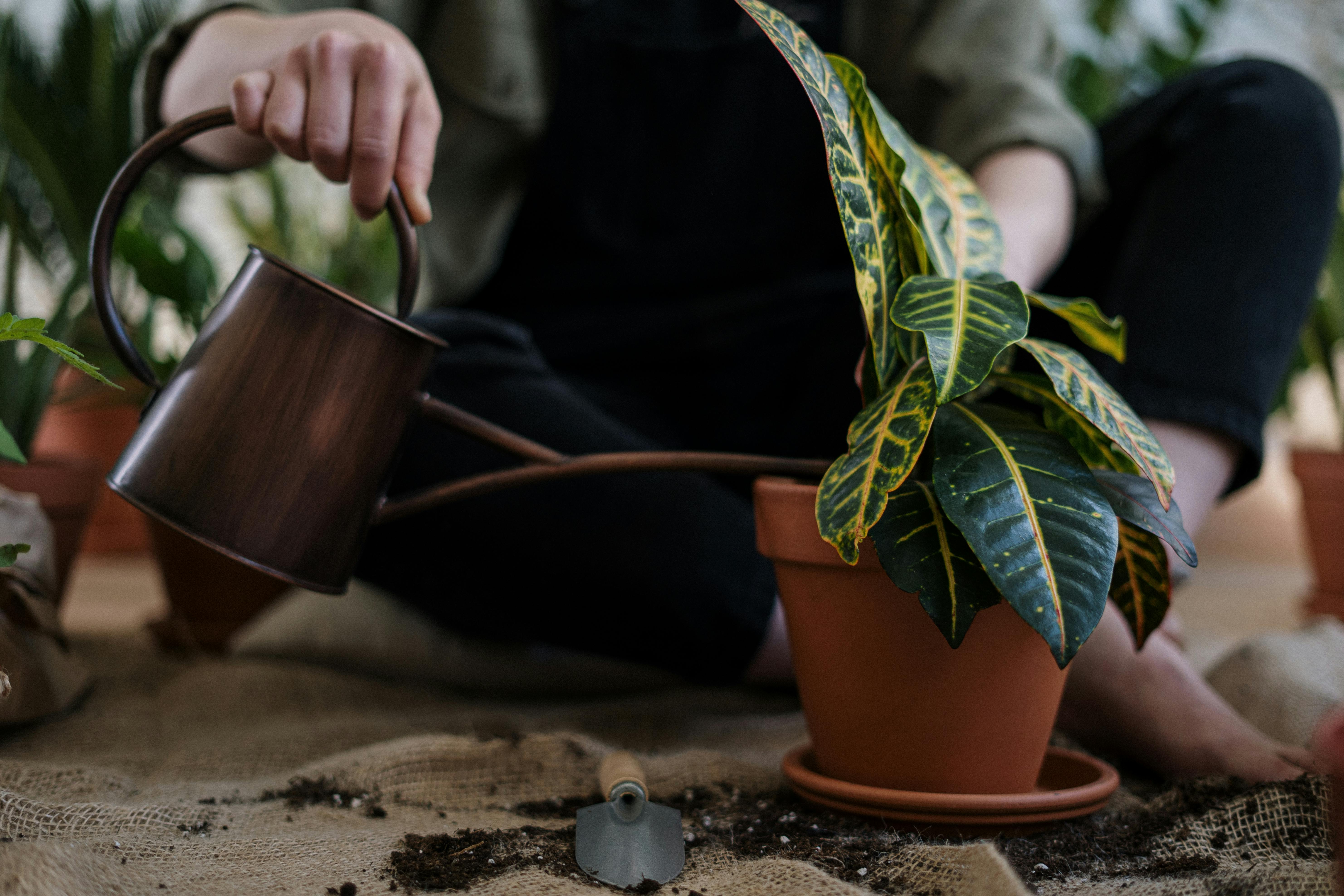
Sage herb, oh boy, where do I even start? Maybe it’s just me but I feel like this little green guy doesn’t get enough credit. Like, seriously, sage is not just some pretty leaf sitting in your spice cabinet, it’s got a whole lotta history and benefits that are kinda mind-blowing. So get ready, ‘cause we’re diving into everything about sage herb benefits that you probably didn’t know. Not really sure why this matters, but here we go!
First off, we gotta talk about what sage actually is. Sage herb, or Salvia officinalis if you wanna be all fancy about it, is a perennial plant that belongs to the mint family. Yeah, it’s a cousin of mint, can you believe that? Anyway, it’s got these beautiful silvery-green leaves and some folks say it smells like heaven, while others might think it’s more like a grandma’s attic. Either way, it’s pretty popular in cooking, especially in Mediterranean dishes. Think stuffing, sauces, and, of course, pizza. Just kidding about the pizza, don’t put sage on your pizza unless you’re feeling adventurous.
Now, sage isn’t just for flavoring your food, it’s also got a bunch of medicinal properties. People have been using sage herb for health for centuries. It’s been known to help with digestion, and it’s even said to have anti-inflammatory properties. Like, who knew that a simple herb could pack such a punch? Here’s a list of some of the benefits of sage:
- Digestive aid: It might help with bloating and indigestion. But, no guarantees here!
- Cognitive booster: Some studies suggest that sage can improve memory. So, if you’re forgetful, maybe make a sage tea or something.
- Antioxidant properties: Sage has antioxidants, which are fancy little guys that help fight free radicals. Not really sure what free radicals are though. Sounds kinda scary.
- Anti-inflammatory effects: It’s said to reduce inflammation, which is, you know, a good thing if you’re feeling all achy.
- Mood enhancer: Some people use sage to help with anxiety and depression. I mean, it can’t hurt to try, right?
And here’s something kinda cool, sage herb can be used in different forms! You can have it fresh, dried, or even as an essential oil. Just don’t get too carried away with the oil, a little goes a long way, trust me. If you’re feeling crafty, you can also make your own sage tea. Just boil some water, toss in a few leaves, let it steep for a bit, and bam! You’ve got a nice herbal drink. Maybe it won’t fix all your problems, but at least it’s warm and comforting.
| Form of Sage | Uses | Notes |
|---|---|---|
| Fresh | Cooking, teas | Strong flavor, best for dishes |
| Dried | Seasoning, infusions | More concentrated flavor |
| Essential Oil | Aromatherapy, topical applications | Dilute before use, very potent |
Now, let’s get into how to grow your own sage herb. If you’ve got a garden or even a balcony, you can totally grow this stuff! It’s not picky about soil, just make sure it drains well. Sage loves the sun, so place it where it can soak up all those rays. Water it regularly but don’t drown it, ‘cause nobody likes soggy plants. You could say it’s a bit of a diva in that regard.
Oh, and speaking of growing, did you know that sage can actually repel pests? Yup, it’s like having a little bodyguard in your garden. You plant sage alongside other plants, and it keeps those pesky bugs away. So if you’re into gardening, adding sage herb is a win-win situation.
While we’re on the topic of sage, let’s not forget the cultural significance. Many Native American tribes have used sage for centuries in rituals and ceremonies. Burning sage, or “smudging,” is often done to cleanse spaces of negative energy. Not sure how much science is behind that, but it sounds pretty mystical. I mean, who doesn’t want to wave a bundle of herbs around to get rid of bad vibes?
So, yeah, sage herb is pretty multifunctional. It’s like that friend who can cook, give advice, and also fix your computer. If you haven’t tried incorporating sage into your life, maybe you should give it a shot. You could add it to your chicken, throw it in a soup, or even use it in your skincare routine (but check with a pro first, okay?).
In the end, whether you’re cooking up a storm or trying to
Culinary Magic: 6 Unique Flavor Pairings for Sage You Must Experiment With
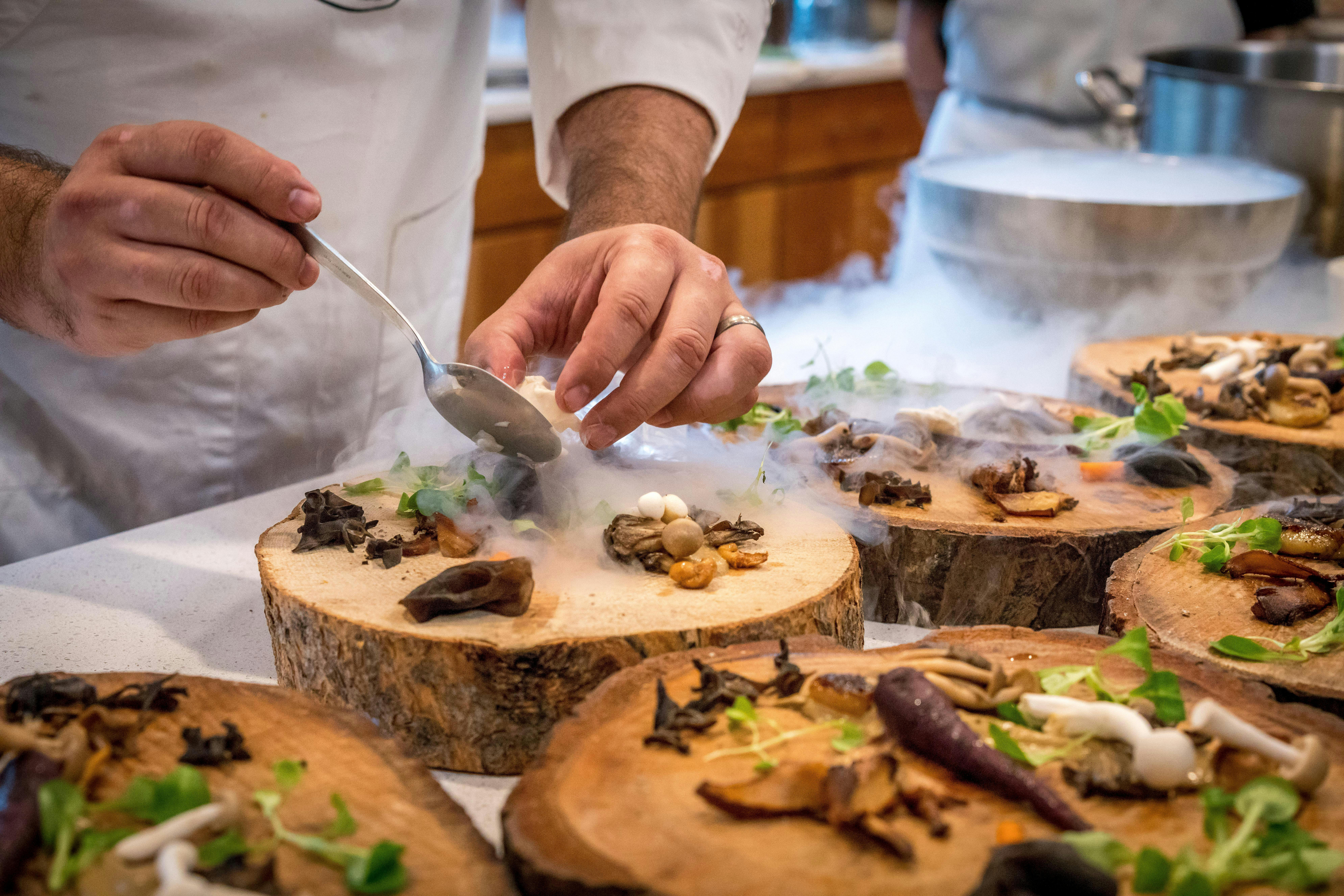
Sage herb, oh where do I even start? It’s one of those herbs that kinda gets overlooked, right? I mean, you’ve got your basil, your parsley, and then there’s sage just chillin’ in the background, like, “Hey, don’t forget about me!” But really, sage is more than just a pretty face in the herb garden. It has a rich history and some pretty wild benefits, if you ask me.
Sage Herb History and Background
Not really sure why this matters, but sage has been used for centuries. It’s been around since ancient times, like, way back when people thought it could cure everything from fevers to bad breath. Yup, you heard me! They even said it could help you live longer. A little over-the-top, don’t you think? But hey, it’s better than popping pills, I guess.
The name salvia comes from the Latin word meaning “to save.” Like, what a dramatic flair for a plant, right? People have been using sage in cooking, medicine, and even in rituals. And honestly, it’s a wonder how it got so popular with a name like that.
Nutritional Benefits of Sage Herb
Now let’s talk about the good stuff, the sage herb health benefits. If you’re not familiar with sage, you might be missing out on a treasure trove of nutrients. It’s packed with vitamins A, C, and K. And let’s not forget the antioxidants! Those little guys are like the superheroes of the food world, fighting off free radicals and all that jazz. Maybe it’s just me, but I feel like we should all be chugging sage tea every morning.
Here’s a quick breakdown of some of the benefits:
| Nutrient | Benefits |
|---|---|
| Vitamin A | Good for your vision and immune system. |
| Vitamin C | Helps with collagen production and skin health. |
| Vitamin K | Important for blood clotting and bone health. |
| Antioxidants | Protect cells from damage and aging. |
There you go! A neat little table that says it all, but maybe not all because I might’ve missed something.
Culinary Uses of Sage Herb
Okay, so sage in the kitchen? It’s kinda a big deal. You can use it fresh or dried, but fresh is where the magic happens. It has this earthy flavor that’s perfect for stuff like roasted meats, especially chicken and pork, and you can’t forget about them hearty soups. But word of warning, a little goes a long way. Too much sage can make your dish taste like you just dumped a whole spice rack in there. Not really the goal, right?
Here’s a couple of popular dishes that use sage:
- Sage Butter Pasta: It’s just pasta, butter, and sage. Simple, yet oh-so-delicious.
- Stuffing: You know, the stuff you eat at Thanksgiving? Yeah, sage is a key player there. Makes it taste like you’re in grandma’s kitchen, no joke.
Sage Herb in Traditional Medicine
Funny enough, sage is not just good for your taste buds, it’s also been used in traditional medicine. People have used it to help with digestive issues, sore throats, and even anxiety. Honestly, it’s like the multi-tasker of the herb world. But, don’t go thinking it’s some sort of miracle cure. It’s not a replacement for actual medical treatment, just a little help on the side.
Some studies even suggest that sage may improve memory and cognitive function. So, if you’re feeling forgetful, maybe sprinkle some on your dinner? Couldn’t hurt, right?
Growing Your Own Sage Herb
If you’re feeling adventurous and wanna try your hand at gardening, sage is super easy to grow. It doesn’t need much water and thrives in well-drained soil. Just toss some seeds in the ground, and boom, you’re a sage farmer! Okay, maybe not that dramatic, but you get the point.
Here’s a quick list of tips for growing sage:
- Sunlight: Sage loves sun. Make sure it gets at least 6 hours of sunlight a day.
- Soil: Use well-drained soil. Sage doesn’t like wet feet.
- Watering: Water it sparingly. It prefers to dry out between watering.
- Harvesting: Regularly trim your plant to keep it healthy and encourage new growth.
In short, sage is not just some herb you toss in your soup and forget about. It’s got history, flavor, and a heap of benefits. So next time you’re in the
Sage vs. Other Herbs: What Makes This Herb Stand Out in the Health Arena?
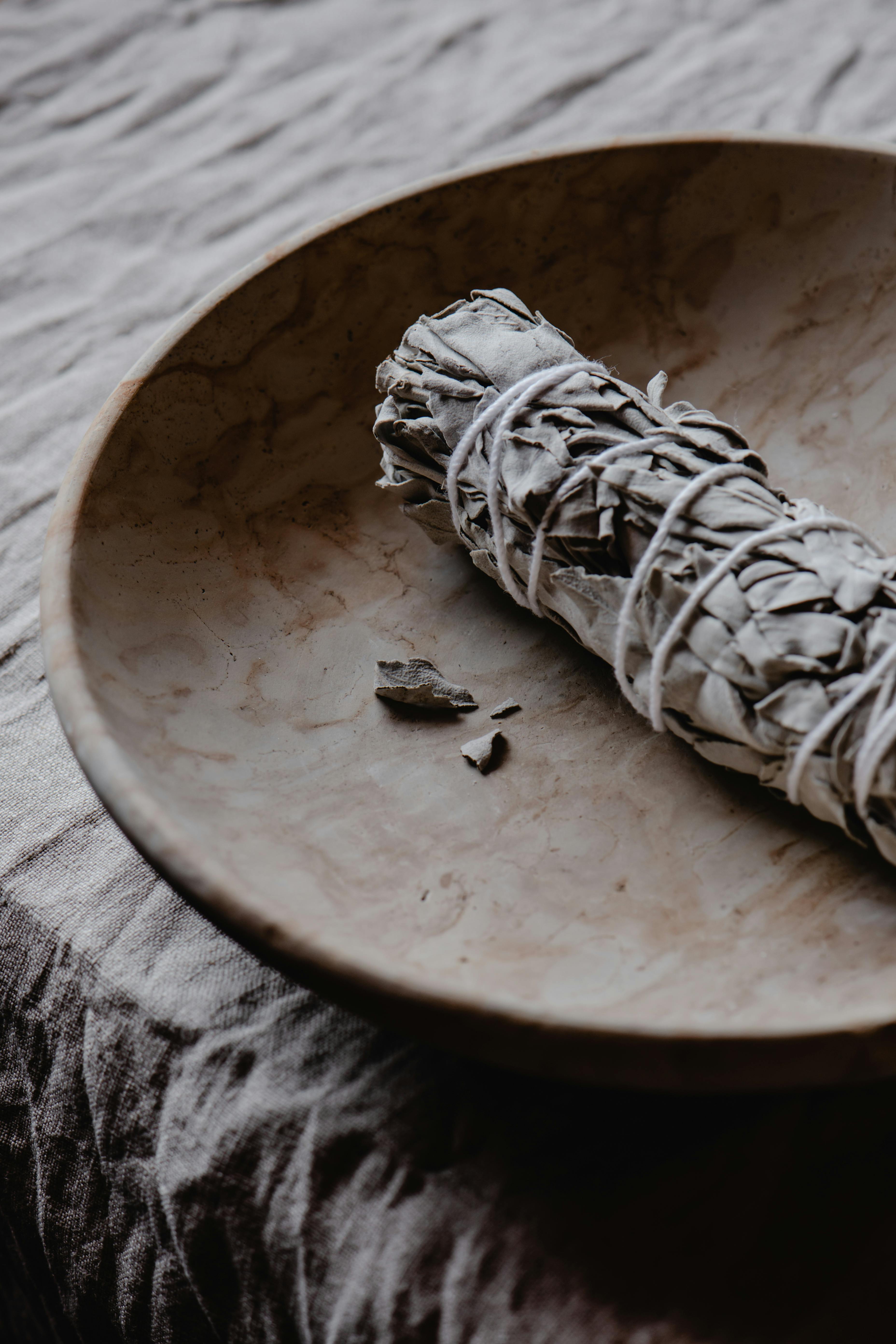
Sage herb, oh boy, where do I even start? It’s one of those herbs that you probably heard of, but not really sure why this matters, but it’s like a superstar in the culinary and health world. Honestly, sage is more than just a pretty face in your spice rack. It’s got a history that goes way back, and I mean way back, like ancient Roman times or something. So, sit tight and let’s dive into the world of sage herb.
First off, lets talk about what sage actually is. It’s a perennial herb that belongs to the mint family. And yes, it smells amazing! There’s this unique flavor it brings to dishes, kinda earthy and warm, not to mention it’s super versatile. You can use sage herb in everything from turkey stuffing to fancy gourmet sauces. I mean, who doesn’t love a good Thanksgiving meal with a sprinkle of sage?
Now, if you’re like me, you might be wondering about how to grow this magical little plant. Growing sage herb isn’t rocket science, but it does have its quirks. Here’s a quick rundown:
| Step | Description |
|---|---|
| Soil | Sage likes well-drained soil, so don’t drown it, please. |
| Sunlight | Full sun, like it’s on a beach vacation. |
| Watering | Water sparingly. Too much water and it’ll drown, for real. |
| Harvesting | Snip the leaves regularly to encourage growth. |
And, let’s be real, your kitchen should have this herb. It’s like a must-have. Maybe it’s just me, but I feel like every home should have a little sage plant sitting on the windowsill, looking all fabulous. Plus, it’s not just for cooking. Some people use sage herb for its medicinal properties too. Yup, you heard that right!
So, here’s the deal: sage has been used for centuries in traditional medicine. It’s said to have properties that can support digestion and even cognitive function. I mean, who wouldn’t want a little extra brain power, right? There’s even this whole thing called “saging” where people burn sage to cleanse spaces. Sounds a bit mystical, but whatever floats your boat!
Now, if you’re interested in the health benefits of sage herb, here’s a few that might catch your attention:
- Antioxidant properties: Helps fight off those nasty free radicals.
- Anti-inflammatory effects: Might help with joint pain, who knows?
- Cognitive boost: Some studies suggest it can enhance memory.
- Digestive aid: Great for bloating and that post-meal sluggishness.
But let’s not get too carried away here. There’s always a flip side. Some people might have allergic reactions to sage. And honestly, if you’re pregnant or nursing, best to check with a healthcare professional. Not trying to be a buzzkill, but it’s better to be safe than sorry, right?
And then there’s the culinary side of things. Cooking with sage herb can elevate your dishes to a whole new level. Think beyond just turkey; how about using sage in pasta dishes or even infused oils? Just imagine sautéing some mushrooms with garlic and sage. Oh man, that’s a flavor explosion!
Here’s a simple recipe that you can try at home:
Sautéed Mushrooms with Sage
Ingredients:
- 2 cups of mushrooms (sliced)
- 2 tablespoons of olive oil
- 2 cloves of garlic (minced)
- A handful of fresh sage leaves
- Salt and pepper to taste
Instructions:
- Heat the olive oil in a pan over medium heat.
- Add the garlic and sauté for about a minute.
- Toss in the mushrooms and cook until they’re golden brown.
- Add the sage herb and season with salt and pepper.
- Cook for another few minutes and enjoy!
Trust me, you’ll impress your friends with this dish, or at least they’ll pretend to be impressed. And hey, if it doesn’t turn out right, just tell them it’s avant-garde cuisine.
In the end, sage herb is like that underdog character in a movie that surprises everyone with its depth and complexity. It’s not just about flavor; it’s about history, health, and a little bit of magic. So next time you pass by the herb section at your local grocery store, give sage a second glance. It might just be the secret ingredient you didn’t know you needed.
How to Incorporate Sage into Your Daily Routine for Maximum Wellness Benefits

Sage herb, oh boy, where to start? This magical little plant has been used for centuries, and honestly, not really sure why this matters, but it’s quite the star in both cooking and medicine. If you’ve ever tossed some sage into a dish, you probably noticed it gives a certain… je ne sais quoi. It’s like the cool kid in the spice rack, you know?
So, let’s dive into a few interesting facts about sage herb that might blow your mind, or maybe just make you raise an eyebrow. Sage, or Salvia officinalis if you wanna get all fancy with the Latin, is not just pretty to look at. It’s got a ton of history. Ancient Romans and Greeks used it for all sorts of stuff, from seasoning their food to, get this, promoting wisdom. Yeah, they thought it could make you smarter. I mean, it’s just a herb, right? But hey, who am I to question ancient wisdom?
Now, let’s talk about the types of sage. There’s not just one kind, folks! You got your common sage, of course, but then there’s also white sage, which is often used in smudging ceremonies. And there’s purple sage, which is, you guessed it, purple. It’s like a rainbow of sage out there. But, maybe it’s just me, but I feel like naming herbs could be a bit more exciting. I mean, why not call one “sassy sage” or “adventurous sage”? Just a thought.
| Type of Sage | Color | Common Uses |
|---|---|---|
| Common Sage | Green | Cooking, Medicinal |
| White Sage | Grayish Green | Smudging, Spiritual Rituals |
| Purple Sage | Purple | Cooking, Decorative |
Alright, so let’s move on to what sage can actually do. Some studies say that sage can improve memory and cognitive function. Sounds good, right? But, I mean, can just adding sage to your pasta really make you a genius? Maybe, maybe not. There’s definitely more research needed on that one. But hey, if it helps you remember where you left your keys, kudos to sage!
Then there’s the whole medicinal angle. Sage has been touted for its anti-inflammatory properties and some people even say it can help with digestive issues. But, let’s be real. If you’re expecting sage to cure your hangover, you might wanna rethink your life choices. It’s not a miracle herb, folks. Just a nice add-on to your health regimen—kinda like that gym membership you keep forgetting about.
Speaking of cooking, let’s whip up a little list of ways to use sage herb in your kitchen. There’s no shortage of options, and honestly, who doesn’t want to be a culinary wizard?
- Sage Butter: Melt some butter, toss in fresh sage leaves, and voilà! A delicious topping for pasta or bread.
- Stuffing: Thanksgiving isn’t complete without sage in stuffing, am I right?
- Sage Tea: Brew some sage leaves in hot water. It’s supposed to be calming, but honestly, it tastes a bit like old socks.
- Roasted Vegetables: Toss sage with your favorite veggies before roasting. It’s like a flavor party in your mouth!
And while we’re on the topic of cooking, let’s not forget about sage’s friends in the herb world. You don’t wanna go solo when you can mix and match! Sage pairs well with things like thyme and rosemary. But, watch out! Too much of a good thing can be, well, too much.
| Herb Pairing | Flavor Profile |
|---|---|
| Thyme | Earthy, Lemony |
| Rosemary | Piney, Woodsy |
| Oregano | Savory, Slightly Bitter |
Moving onto the gardening part. If you’re feeling adventurous, you might wanna try growing your own sage. It’s not that hard, and you’ll save a few bucks at the store. Not to mention, fresh herbs just hit different. Just make sure it’s in well-drained soil, and give it plenty of sunlight. And for the love of all things holy, don’t overwater it. Sage is tough, but it’s not a fan of swimming pools.
But, if you’re like me and have a black thumb (yeah, I can kill plastic plants), maybe just buy it from the store. It’s a safer bet, honestly.
In the end, sage is more than just a spice; it’s a multitasker. Cooking, healing, and even making your home smell like a dreamy herb garden. So,
Conclusion
In conclusion, sage herb stands out not only for its rich culinary uses but also for its impressive array of health benefits. From enhancing digestion and improving cognitive function to its potential anti-inflammatory properties, sage is a versatile addition to both your kitchen and your wellness routine. Its aromatic qualities make it a favorite in various dishes, while its historical significance in traditional medicine highlights its value beyond mere flavor. Whether you choose to incorporate sage in your meals, teas, or as a natural remedy, this herb offers a taste of nature’s goodness. As you explore the myriad ways to utilize sage, consider growing your own at home for a fresh supply and the joy of gardening. Embrace the power of sage today and elevate both your culinary creations and overall health. Don’t hesitate to experiment with this remarkable herb in your life!
